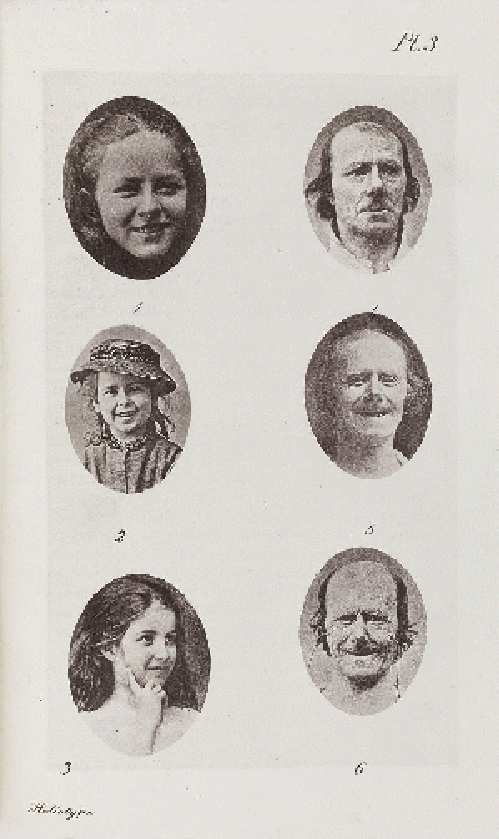This universal set of facial expressions strongly suggests that the most common emotional expressions are not learned, like the hundreds of spoken languages, but rather, are wired into our nervous systems. We smile or frown because the facial expressions are programmed, through our genes, into our being. The dog's bark and cat's meow, the shocked look of surprise, the sneer of disgust and the happy smile are woven into the spiral helix of the DNA that spells out the definition and specifications of each species.
Just as hair and skin color, height and nose shape are passed along from parent to child, many of the facial muscles and other body parts that express emotion are also hereditarily influenced, giving some people blinding smiles, with flashing gums. or distorted attempts at smiles which produce barely perceptible movements at the corners of the mouth.
Emotional Illiteracy
Emotional expression starts at birth with crying and takes many weeks or months to begin blooming. Parents lovingly work to cultivate those first smiles, coos and laughs. Long before the child can deevelops language skills, he can cry, scream or smile anything out of Mama or Papa. Once walking and talking begin, our culture shifts all the emphasis there, almost forgetting emotional communication skills entirely. Emotional expression training tapers off, with few if any conscious efforts at the emotional equivalent of grammar training or vocabulary building or further development of the language of emotions. We're left to fend for ourselves.
Over 100 years ago a debate on one of the most important aspects of human emotion began. What comes first? Does something which happens in our environment, like the screeching of tires, set off a racing heart beat so we feel the pounding in the chest and become aware of the emotion? Or do we hear the tires, feel the fear and become fearful, thus setting the heart racing?
Pioneer psychologist, William James, took this position in the debate, " An emotion of fear, for example, or surprise, is not a direct effect of these objects's presence on the mind, but an effect of that still easier effect, the bodily commotion which the object suddenly excites; so that, were this bodily commotion suppressed, we should not so much feel fear as call the situation fearful; we should not feel surprise.., but coldly recognize that the object was indeed astonishing. ...the mere giving way to tears, for example, or to the outward expression of an anger-fit, will result for the moment in making the inner grief or anger more acutely felt."
James' following observation spells out the heart of the pattern activation component of the Happiness Response model of emotional self regulation. "...Action seems to follow feeling, but really action and feeling go together; and by regulating the action, which is under the more direct control of the will, we can indirectly regulate the feeling, which is not. ...Thus the sovereign voluntary path to cheerfulness, if our spontaneous cheerfulness be lost, is to sit up cheerfully, to look round cheerfully, and to act and speak as if cheerfulness were already there. If such conduct does not make you soon feel cheerful, nothing else on that occasion can.
"So to feel brave, act as if we were brave, use all our will to that end. .... and a courage-fit will very likely replace the fit of fear. ...To feel kindly toward a person to whom we have been inimical, the only way is more or less deliberately to smile, to make sympathetic inquiries, and to force ourselves to say genial things. ...One hearty laugh together will bring enemies into a closer communion of heart than hours spent on both sides in inward wrestling with the mental demon of uncharitable feeling. ...To wrestle with a bad feeling only pins our attention on it, and keeps it still fastened in the mind; whereas, if we act as if from some better feeling, the old bad feeling soon folds its tent ... and silently steals away."






